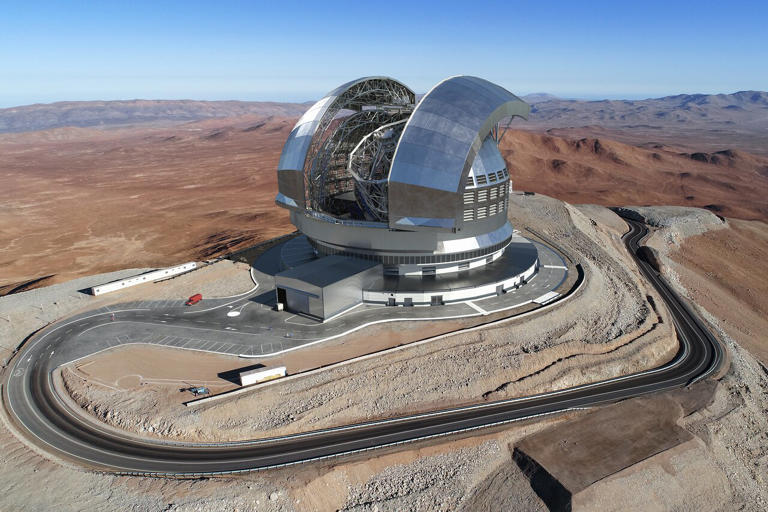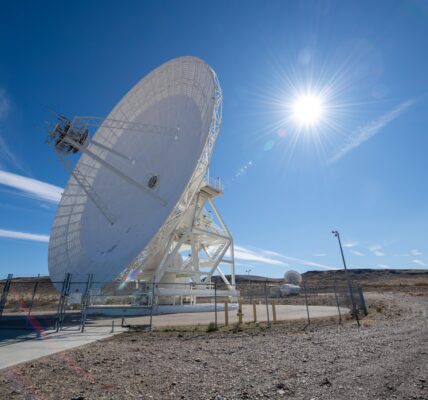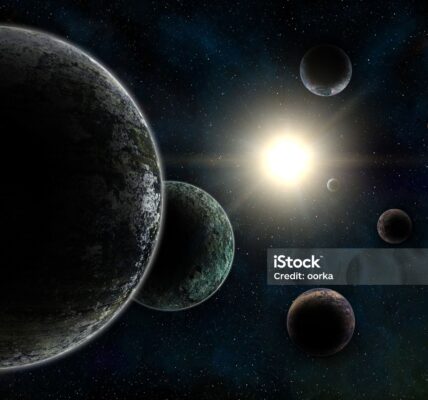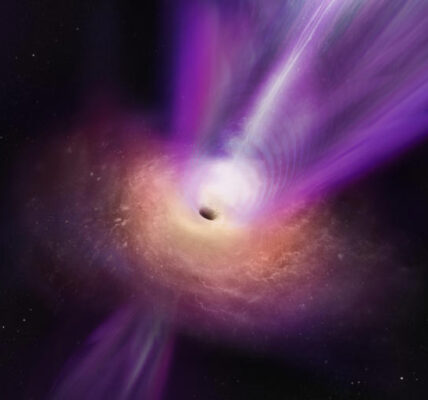“Uranus Moon Miranda Ocean Discovery: 7 Exciting Clues About Extraterrestrial Life!”
“Uranus Moon Miranda Ocean Discovery could reveal signs of life beyond Earth. With evidence of a hidden ocean, scientists are pushing for a new mission to explore this intriguing moon in search of extraterrestrial possibilities.”
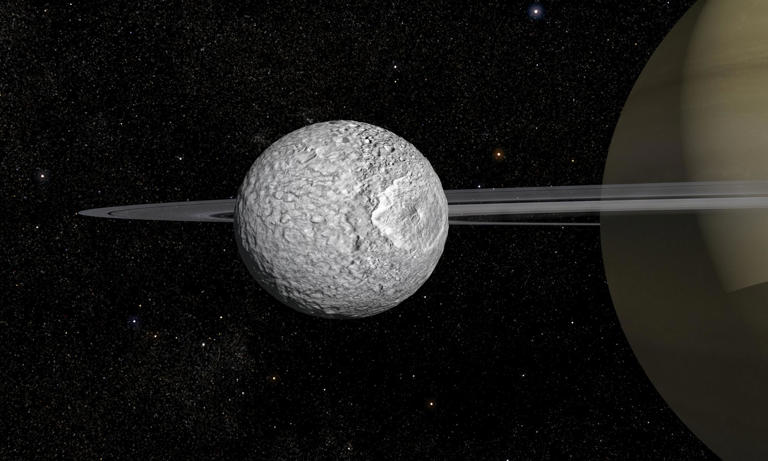
Table of Contents
ToggleUranus Moon Miranda Ocean Discovery: Could Extraterrestrials Be Closer Than We Thought?
The discovery of a possible ocean on Uranus’ moon Miranda has intrigued scientists and sparked new debates about the possibility of extraterrestrial life in our solar system. Often overlooked, Uranus and its moons may harbor secrets waiting to be unlocked—secrets that could change our understanding of life beyond Earth. Researchers from Johns Hopkins Applied Physics Laboratory recently announced that Miranda might contain an ocean beneath its icy crust, an environment that could, in theory, support life.
Let’s explore what this discovery means, why Miranda stands out among other moons, and how scientists are pushing for a new mission to study this distant, mysterious world.
Evidence of an Ocean on Miranda
For decades, scientists have questioned the potential for life in the cold, distant regions of our solar system. While moons like Europa and Enceladus (orbiting Jupiter and Saturn) have been the focus of exploration due to evidence of subsurface oceans, the Uranus Moon Miranda Ocean Discovery suggests that this small, seemingly barren moon could also be hiding a liquid ocean under its frozen shell.
In a recent study, researchers combined images captured by NASA’s Voyager 2 in 1986 with computer models to explore Miranda’s surface and interior. They found that the moon’s unique geological features—cracks, ridges, and varied terrains—likely result from tidal forces acting on a subsurface ocean. This ocean is estimated to be around 19 miles beneath the surface and could have extended 62 miles wide during its peak.
Why Miranda’s Ocean Discovery Is Important
While it might seem unlikely that a moon 1.7 billion miles from Earth could host life, the Uranus Moon Miranda Ocean Discovery offers a tantalizing possibility. Miranda is one of 288 moons orbiting the planets in our solar system, yet it “stands out” according to the scientists involved in the study. Tom Nordheim, a co-author of the study, emphasized that finding an ocean on Miranda was surprising, noting that it contributes to growing evidence that Uranus’ moons could be “ocean worlds.”
The discovery highlights two crucial points:
- Miranda’s Ocean Discovery Could Expand the Hunt for Life
If life can exist in subsurface oceans on moons as distant as Miranda, it opens up new avenues for exploration in our search for extraterrestrial life. Typically, scientists have focused on the “habitable zone” around stars, where liquid water can exist on planetary surfaces. However, Uranus Moon Miranda Ocean Discovery indicates that even cold, icy moons far from the sun may harbor oceans capable of supporting life. - A Call for a New Mission to Uranus and Its Moons
The findings are so compelling that the researchers are advocating for a new mission to Uranus, the only giant planet in our solar system that has not been closely studied in recent decades. The last time a spacecraft visited Uranus was in 1986, when NASA’s Voyager 2 captured images of the planet and its moons. But Voyager’s brief encounter provided limited data. Since then, technological advancements have greatly improved, making a mission to Uranus more promising now than ever.
What the Voyager 2 Images Revealed About Miranda
In 1986, Voyager 2 was the first and only spacecraft to fly by Uranus, capturing detailed images of Miranda’s unusual landscape. The spacecraft revealed a southern hemisphere marked by patchwork-like terrain—a mixture of cracks, grooves, and ridges. Scientists were puzzled by this “Frankenstein-like hodgepodge,” which looked like pieces of a quilt stitched together. This strange pattern is thought to be caused by tidal forces, where gravitational interactions with Uranus could have warmed Miranda’s icy shell, creating cracks and ridges over time.
This rough surface hints at intense internal activity, leading scientists to suspect the existence of an ocean beneath Miranda’s crust. Caleb Strom, the lead researcher on the study, explained that the Uranus Moon Miranda Ocean Discovery was unexpected and has left the team eager to learn more about the internal structure of Miranda and its potential as a habitat for life.
How Scientists Tested for an Ocean on Miranda
To investigate further, scientists developed a computer model that simulated several possible structures for Miranda’s interior. They analyzed the surface features in detail, mapping the visible cracks and ridges, and tested different internal configurations to see which one matched Miranda’s surface patterns most accurately.
After several iterations, the model showed that the best match for Miranda’s surface features was a vast subsurface ocean that may have existed 100-500 million years ago. This ocean, if still present, would be relatively thin yet highly significant for supporting potential life. Despite Miranda’s small radius of just 146 miles, this ancient ocean could have filled nearly half of the moon’s body.
Could Miranda’s Ocean Still Be There?
The Uranus Moon Miranda Ocean Discovery raises the question of whether Miranda’s ocean still exists today. While the scientists involved in the study cannot confirm this, they believe there may be a “thin layer” of water left under the icy crust. Even a small amount of liquid water could be significant, as it increases the likelihood of finding environments capable of hosting microbial life.
The researchers admit that, for now, the only way to know for certain is through further exploration. Although Voyager 2’s images have provided crucial insights, they are nearly 40 years old. Scientists are urging a new mission to Uranus to gain fresh data that could confirm the presence of a subsurface ocean on Miranda.
The Need for a Dedicated Mission to Uranus
The Uranus Moon Miranda Ocean Discovery adds urgency to calls for a mission to Uranus, an ice giant that has largely remained unexplored. In 2022, the National Academy of Sciences highlighted the importance of Uranus in a report recommending that NASA prioritize a mission to the planet. The academy noted that studying Uranus would help improve our understanding of ice giants, which represent a unique class of planets in our solar system.
A dedicated Uranus mission could involve an orbiting spacecraft and possibly a probe that could enter Uranus’ atmosphere, providing data on the planet’s composition and its moons. Such a mission would be groundbreaking, allowing scientists to study the dynamics of ice giant systems and learn more about their potential to host life.
The Future of Extraterrestrial Exploration
The Uranus Moon Miranda Ocean Discovery has breathed new life into the search for extraterrestrial life, particularly on moons of distant planets. If a mission to Uranus is approved, it could reveal much about Miranda’s mysterious ocean and provide insights into whether other moons around Uranus also contain hidden oceans. It may even shed light on how life might survive in the most unexpected places.
This discovery is a reminder that our solar system still holds many surprises, even in places as remote as Uranus. A mission to Miranda could be one of the next big steps in our journey to understand the potential for life beyond Earth. Until then, scientists will continue to work with the data they have, squeezing every bit of insight from Voyager 2’s images and eagerly awaiting the chance to explore Uranus and its moons more closely.
The Uranus Moon Miranda Ocean Discovery brings us one step closer to unraveling the mysteries of our universe, challenging our assumptions about where life might exist and urging us to look beyond traditional boundaries.
Related:
Self-Destructive Civilizations and Climate Change: 5 Powerful Insights for a Sustainable Future
